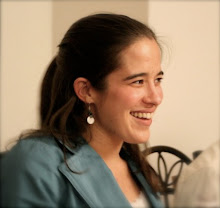Here are some patients I don't want to forget.
A 5-year-old little girl was brought in by her aunt for 15 months of abdominal distension, a cough, and headache. She was orphaned a year and a half ago when her mother died. Nothing else really came up on the history, so I took them back to the little room where we do examinations if the patient will lie down or if it requires privacy. In examining her belly, I found the reason for the abdominal distension: a huge abdominal mass in the right side with a groove between it and her liver, extending to several cm past the umbilicus and down into the pelvis. My heart just sank as I reviewed my short differential diagnosis for an abdominal mass in a 5-year-old: Wilms' tumor, neuroblastoma, possibly something renal...
I saw them several times over the course of the next few days with various lab results (a normal CBC, negative HIV, normal creatinine and LFTs) and then the ultrasound results: complex, multicystic, intrahepatic lesion. At that point, my differential failed. She had already been treated for parasitic disease, so we referred her on to the University Teaching Hospital in Lusaka. I emphasized with the concerned aunt how important it was that she be taken and seen as soon as possible. The little girl was by this time sitting comfortably on my lap as her aunt and I talked about the results and possibilities. Then we prayed together, and I sent them off with the referral letter.
Another was a 41-year-old mother of twins (G12P9). I saw her for almost two weeks on maternity waiting on the ward for the pregnancy to come to term and then waiting because her twins were breech (twin A) and transverse (twin B) and so wouldn't probably deliver at home on their own. I used my Tonga phrases for the cardinal obstetrics questions with her every few days on rounds (any vaginal bleeding? any rupture of membranes/leakage of fluid? is the baby moving well? any contractions?) and she would smile and respond with the hoped-for answers (no, no, yes, no) for almost two weeks until she finally did go into labor. Then I actually got to be there to see the breech vaginal delivery (all on her own!) of the first and internal podalic version (turning the second baby using the foot) with breech delivery of the second twin. I helped with resuscitation, assessed the Apgars, and checked the new-again mom for postpartum hemorrhage since she was high-risk with twins and high parity (number of pregnancies). She did well, and I was happy to be part of the whole process and see it through to the end!
Another maternity patient I remember was a married 15-year-old G1P0 (first pregnancy); apparently most girls go to high school or get married young, so I saw a number of pregnant 15- and 16-year-olds who were married as well as a few who were not. I was rounding in the evening and was helping to count for her to learn how to push the baby effectively (something not usually done in Zambia from what I can tell - the counting, not the pushing). She made a little progress but not much, so I ended up seeing my first Zambian vacuum-assisted delivery (when I couldn't even see the head at all whether she was pushing or not). It was successful, though, with the nurse pumping the vacuum while the doctor pulled on the head, and we were glad she didn't have to get a C-section. When I rounded the next day and checked on her and the baby, both were doing really well and she lit up with a smile to see me. She spoke a little English, so I think she had understood my counting and encouragement the night before and was happy for it.
A final patient was a 6-year-old boy I admitted to men's ward (the cutoff for peds being six years due to high rates of disease/malnutrition in younger kids). I was worried about nephrotic syndrome (post-strep GN) with complaints of a sore throat two weeks ago, facial and feet swelling, abdominal pain, and headache. The urinalysis turned out to have only trace protein, though, and the child continued to spike fevers through penicillin and then amoxicillin and looked sick, never smiling at me whenever I came up to check on him. So we ended up deciding to do a lumbar puncture (spinal tap) to make sure he didn't have meningitis. I did my first pediatric LP, which was relatively direct (for which I was grateful), and we started him on stronger antibiotics (cefepime, having run out of ceftriaxone for meningitis). By the time I was leaving, he looked a bit better and gave me a crooked smile. :)
Subscribe to:
Post Comments (Atom)


No comments:
Post a Comment
Note: Only a member of this blog may post a comment.